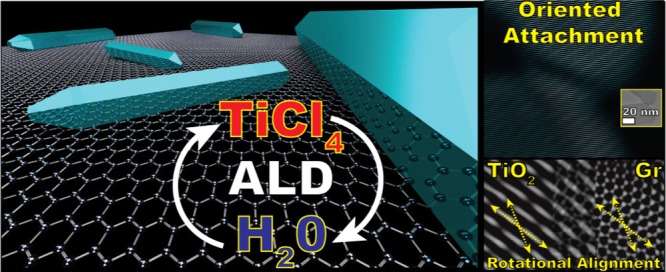- Record: found
- Abstract: found
- Article: not found
Oriented Attachment and Nanorod Formation in Atomic Layer Deposition of TiO 2 on Graphene Nanoplatelets

Read this article at
Abstract

Understanding the spontaneous organization of atoms on well-defined surfaces promises to enable control over the shape and size of supported nanostructures. Atomic layer deposition (ALD) boasts atomic-scale control in the synthesis of thin films and nanoparticles. Yet, the possibility to control the shape of ALD-grown nanostructures remains mostly unexplored. Here, we report on the bottom-up formation of both linear and V-shaped anatase TiO 2 nanorods (NRs) on graphene nanoplatelets during TiCl 4/H 2O ALD carried out at 300 °C. NRs as large as 200 nm form after only five ALD cycles, indicating that diffusional processes rather than layer-by-layer growth are behind the NR formation. In particular, high-resolution transmission electron microscopy reveals that the TiO 2 NRs and graphene nanoplatelets are in rotational alignment as a result of lattice matching. Crucially, we also show that individual nanocrystals can undergo in-plane oriented attachment.
Related collections
Most cited references58
- Record: found
- Abstract: not found
- Article: not found
Atomic layer deposition: an overview.
- Record: found
- Abstract: not found
- Article: not found
Surface chemistry of atomic layer deposition: A case study for the trimethylaluminum/water process
- Record: found
- Abstract: found
- Article: not found
